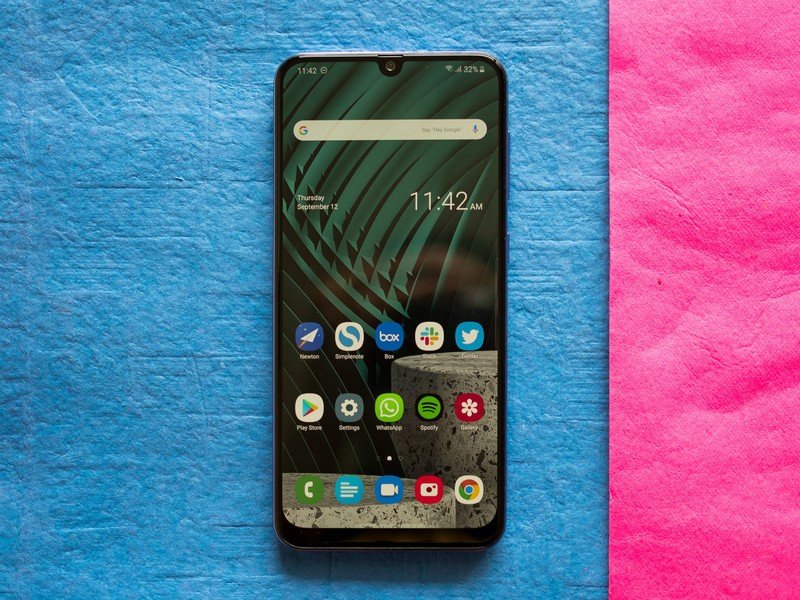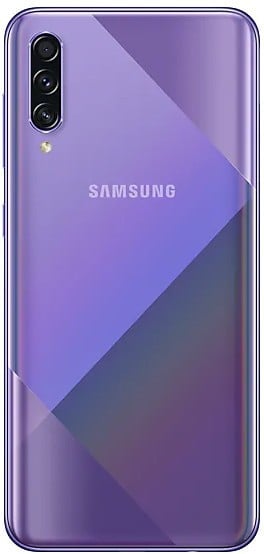Samsung Galaxy A50s preview: Stunning design, great new 48MP camera

Samsung did something earlier this year that was unthinkable: it made a good budget phone. After years of releasing phones under the Galaxy J series with boring designs and under-powered hardware, Samsung finally started paying attention to the budget segment. It nixed the Galaxy J series, brought Galaxy A designs with fresh designs and robust hardware to the budget category, and it did all that while still managing to stay competitive with Xiaomi and Realme.
I called the Galaxy A50 the most interesting budget phone from Samsung in a long time. The South Korean manufacturer is now introducing an updated variant with a stunning new design at the back, a 48MP primary camera, and 32MP front shooter.
The Galaxy A50s is a true mid-cycle refresh: it shares the same underlying hardware as its predecessor, with Samsung focusing on the new design and 48MP camera as the differentiator. Samsung is also bringing a few camera features from its flagships, and overall there's a lot to like here.

Samsung switched to a gradient effect on the Galaxy A series earlier this year, and the Galaxy A50s sees an evolution of that design. Samsung calls it 3D Prism design, with a crisscross pattern that looks incredible — it creates a two-tone effect at the back, and when you factor in the gradient design, the Galaxy A50s turns heads. Like the Galaxy A50, the back itself is made out of polycarbonate, but it is designed to mimic the look and feel of glass.
You also get subtle curves around the sides, and the in-hand feel is perfect. It's not too heavy at 169g, and the 7.7mm thickness makes it easy to hold and use the phone. The power and volume buttons are on the right, the USB-C charging port is at the bottom, and you get a single speaker that sits next to it. The Galaxy A50s is available in three color options: Prism Crush Violet, Prism Crush Black, and Prism Crush White.





The underlying hardware hasn't changed from the Galaxy A50: you get an 10nm Exynos 9611 chipset, in-display fingerprint sensor, 4000mah battery with 15W fast charging, and 3.5mm jack. The Exynos 9611 is a minor refresh of the Exynos 9610 with a marginal increase in frequencies — the Cortex A73 core cluster is now at 2.4GHz, and the Cortex A3 cluster at 1.75GHz.
Same great hardware as the Galaxy A50 with a few welcome additions.
In real-world usage scenarios, the performance is identical to the Galaxy A50. You do get a Game Booster mode that kicks things up a gear when you're gaming. Elsewhere, you get USB-C, FM radio, NFC with Samsung Pay, MicroSD slot, Wi-Fi ac, and Bluetooth 5.0. Samsung hasn't omitted any key features here, and that's a welcome change. The 6.4-inch FHD+ Super AMOLED display is unchanged from the Galaxy A50, and you get a waterdrop cutout up top.
Be an expert in 5 minutes
Get the latest news from Android Central, your trusted companion in the world of Android
There's a new 48MP camera at the back, and Samsung is throwing in a few features from its flagships: there's best shot suggestion, and scene optimizer. You also get a dedicated night mode, which should provide better results when shooting in low-light scenarios. The 48MP shooter is on par with other devices in this segment, and I'll have much more to share about the camera over the coming weeks.

As for the software, the Galaxy A50s is running One UI based on Pie. The interface is identical to that of the A50, but Samsung somehow managed to add even more bloatware this time around. The A50s comes with a truly astonishing number of pre-installed apps: there's the usual Microsoft services, including LinkedIn, OneDrive, Outlook, and the rest, and you also get a local language news app called DailyHunt.
There's a truly astonishing amount of bloatware here, even for a Samsung phone.
Samsung has also teamed up with ByteDance — the makers of TikTok — to bundle a localized social network built for India called Helo. It's available in 14 regional languages, and the interface itself is similar to that of Facebook. That's not the end of the bloatware story on the A50s, as the phone also has Snapchat installed out of the box. Samsung must have felt the need to balance things out here — Helo is about as local as things get for India, so it bundled another social network that has a primarily global userbase. Samsung is nothing if not considerate in its bloatware choices.
That's it for the pre-installed apps, but the bloatware journey on the Galaxy A50s is just getting started. While setting up the phone, you'll see a dialog box for a dynamic lock screen feature that's powered by Glance, which essentially takes over your lock screen and serves irrelevant backgrounds along with tidbits of information. And there's ironSource, which is the easiest way to install apps you've never heard of. It shows "recommendations" based on your age and gender, and there's no way to dismiss the service — it shows up as a persistent notification in the notification pane, and you have to go through the motions and de-select all apps for it to go away.
The bloatware situation is annoying, particularly when you consider how much the Galaxy A50s costs, but thankfully you can disable or remove everything. You just have to be vigilant when setting up the device to make sure you don't install any of the "services" that Samsung is pushing here.

The Galaxy A50s is offered in two variants in India: a base model with 4GB of RAM and 128GB of storage that's available for ₹22,999 ($320), and a 6GB/128GB option for ₹24,999 ($350). It's great to see that the base variant comes with 128GB of storage.
Overall, there's a lot to like on the hardware front. The addition of a 48MP camera makes the A50s stand up to what Xiaomi and Realme are offering in this space, Samsung Pay continues to be in a class of its own, and the 4000mAh battery easily lasts a day. I'll have much more to talk about the Galaxy A50s in the coming weeks, so stay tuned. In the meantime, share your thoughts on the device in the comments below.

A great successor to the Galaxy A50.
The Galaxy A50s retains everything that made its predecessor great, while introducing exciting new features. The 48MP camera is a fantastic addition, and you get a vibrant AMOLED panel backed by robust hardware and all-day battery life.

Harish Jonnalagadda is Android Central's Senior Editor overseeing mobile coverage. In his current role, he leads the site's coverage of Chinese phone brands, networking products, and AV gear. He has been testing phones for over a decade, and has extensive experience in mobile hardware and the global semiconductor industry. Contact him on Twitter at @chunkynerd.
